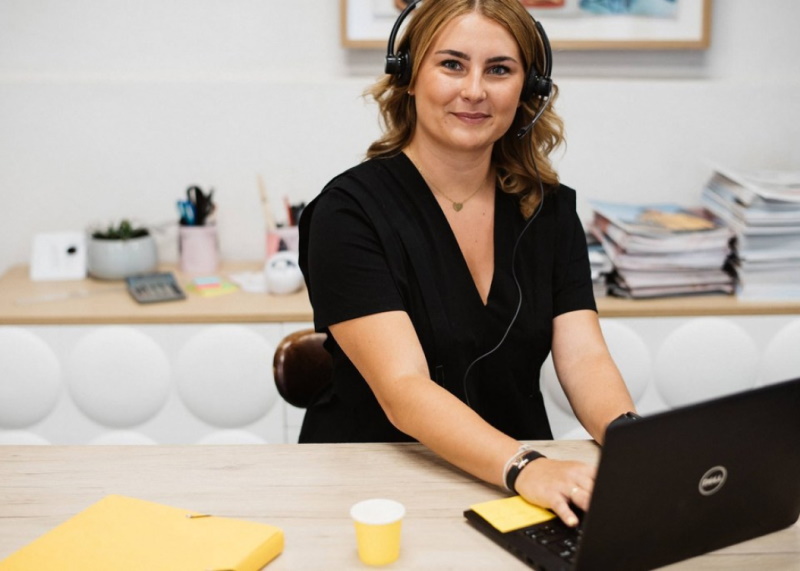Analysis of a trend which is set to enjoy strong growth, with Louis-Clément Schiltz (CEO, Webotit) and Mathieu Le Quernec (Innovation Coordinator, Arkéa), partners of Monext's Omnichannel range of solutions.
What are the opportunities offered to brands by conversational assistants ?
Louis-Clément Schiltz -Webotit (LCS): Today, brands spend fortunes to buy traffic, but this only results in a few conversions…What’s more, visitors are anonymous most of the time and so cannot be re-engaged with. This means that companies are paying but not forging ties. A conversational assistant allows them to get to know their customers, support them in the shopping pathway and above all to provide an extremely personalised customer experience.
Mathieu Le Quernec (MLQ): Chatbots assist the customer relationship and brands’ images by providing 24/7 availability, immediacy and above all an amazing source of data to improve knowledge of customers and to understand their expectations.
Going beyond mere automated assistance, the bot can be a genuine “virtual vendor”. Is this really effective? What feedback and ROI do your clients have?
LCS: Virtual vendors help brands to forge real ties with their customers. At Webotit, we believe that businesses must adapt the way they address users. This is why we base our work on the latest neuromarketing and psycholinguistic research to adapt the sales funnel and virtual vendor rhetoric according to the consumer and his/her psychological state at the time of the purchase. In real terms, this means that our virtual assistants behave in the way a good sales advisor would and can increase the conversion rate by 30% on average. In addition, we process 80% of questions that customer services receive end-to-end, without any human intervention. The investment therefore pays off really well as of the first year!
MLQ: Through conversational interfaces, we can buy … and therefore sell. The chatbot’s ability to understand is a major challenge as it allows the user to steer the conversation. Our experience over 12 months has shown very encouraging results! A pathway that is 3 times faster than other sales channels and conversion rates exceeding 20%! The chatbot also helps merchants to offer an innovative and optimised pathway, in line with new consumer behaviours. Lastly, the shopping pathway analysis feeds into the digital marketing strategy of the e-retailer for enhanced customisation and greater loyalty building!
It is often thought that chatbots are limited to digital channels. Do you have any relevant cases of use in physical points of sale?
LCS: Three years ago, we tested a virtual vendor in Parashop parapharmacies. Around 20% of traffic came from QR Codes installed in stores. However, we had to deal with connectivity problems in many stores. Now, we recommend installing WI-FI terminals in points of sale and to install shelf-talkers with NFC chips and QR codes.
MLQ: Chatbots are just a tool that meets a natural practice: conversation. They are currently closely associated with mobility … We haven’t yet done any tests in physical points of sale but it seems quite likely that these technologies will be used, in terminals to book cinema tickets for example.
Are there any vertical retail markets which are particularly fond of bots? Which ones?
LCS: Sectors in which customers are expecting advice and support. For example, parapharmacy, electronics, tourism, wine, etc. We are also seeing good cases to be developed in food superstores with virtual assistants doing shopping via Facebook Messenger and WhatsApp.
MLQ: Several business sectors are already seriously considering this technology. Cinemas, hotels, restaurants, transportation, etc. These chatbots potentially concern all areas!
For a totally seamless experience, it is important that the payment stage is correctly integrated in the conversation. How did you deal with this issue?
LCS: Following our win at VivaTechnology in 2018, we were fortunate to be able to work with the Cartes Bancaires economic interest group on the launch of the first conversation payment solution on the French market. To achieve this, we decided to integrate Monext’s on-line payment solution in our bot so we could offer our clients totally seamless and integrated payments. Working with the LabByCB, Monext’s teams provided their high level of payment expertise and worked with us on a new store concept in which the customer receives assistance from a virtual vendor on their Smartphone and pays as part of the conversation. A genuinely seamless omnichannel pathway!
MLQ: Integrated and simplified pathways are essential. Each time there is a break in the channel or a need to re-enter information, the risk of losing the customer increases. This is why we have taken careful steps to integrate new payment methods (wallets) as much as possible directly in the conversational pathway we have developed. The payment service, via fingerprint, is directly integrated in the chatbot, for a comprehensive customer experience. Thanks to Monext, the Arkéa Group is now able to provide a comprehensive service, from the sales pathway via the chatbot to the processing of payment flows (Google Pay, etc.).

